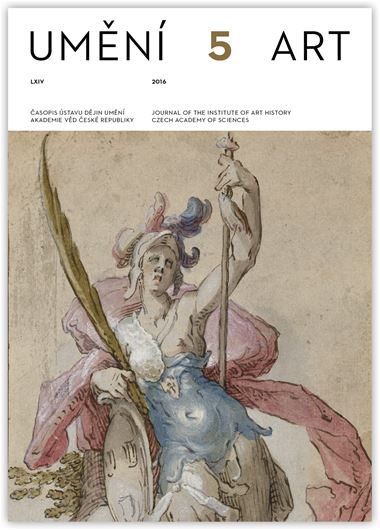Jan Dienstbier
The Image of the Fool in Late Medieval Bohemia
This paper deals with the depiction of the fool in visual art in late medieval Bohemia. Following a brief summary of the literature on the iconography of the jester or fool and the meaning of the figure in medieval culture, the paper focuses on individual and, until now, largely neglected iconographic variants occurring in the Bohemian Lands. Their meaning can be revealed by a comparison with analogies abroad. This is the case with the figure of a vainglorious man depicted in a wall painting of the Last Judgment in the Church of St. James in Srbeč. One of the attributes of this man is a large spoon that has a double meaning in German, pointing out his stupidity. Another example is a relief in the Lapidarium of the National Museum that was found in Brandýs nad Labem. It does not, as was supposed in earlier literature, show a hunter with his dog; instead, it portrays a half-naked fool-exhibitionist. A similar explanation relates to the jester with exposed genitalia that appears on a stove tile found in Brno. The figure of the fool played an essential role in the depiction of some distinctive iconographic themes, such as the portrayal of the Morris dance. This theme is evoked in three weathered statues known as the ‘dancers’ on the parapet of the Church of St. Barbara in Kutná Hora. Such sculptural decoration on an important Utraquist church makes sense with regard to the moral meaning of the Morris dance, which demonstrates the foolishness of physical love. As well as individual iconographic types of folly, the paper also focuses on the portrayal of fools in the context of other scenes. The presence of a ‘commentary’ fool can often change the meaning of an image or draw attention to inconsistencies in the depiction of the main motif. On the altar of St James in Most, the fool thus draws attention to a miracle; in the group of corbels from Hrádek in Kutná Hora, he probably refers to the neighbouring ill-matched couple. A complex use of the motif is demonstrated in the intricately composed hunting scene in the Green Chamber in Žirovnice, where the two fools portrayed on the margin of the scene confirm the allegorical subtext.
Full-text in the Digital Library of the Czech Academy of Sciences:
https://kramerius.lib.cas.cz/uuid/uuid:8d068202-5dcb-4f12-88d9-e5cb6a0a8308
< back

